The Slow Road to Fresh Air in the Carpinteria Valley
Ceres Farms Gets Two Years to Install Filters That Can ‘Scrub’ Smell of Pot from Cannabis Greenhouses
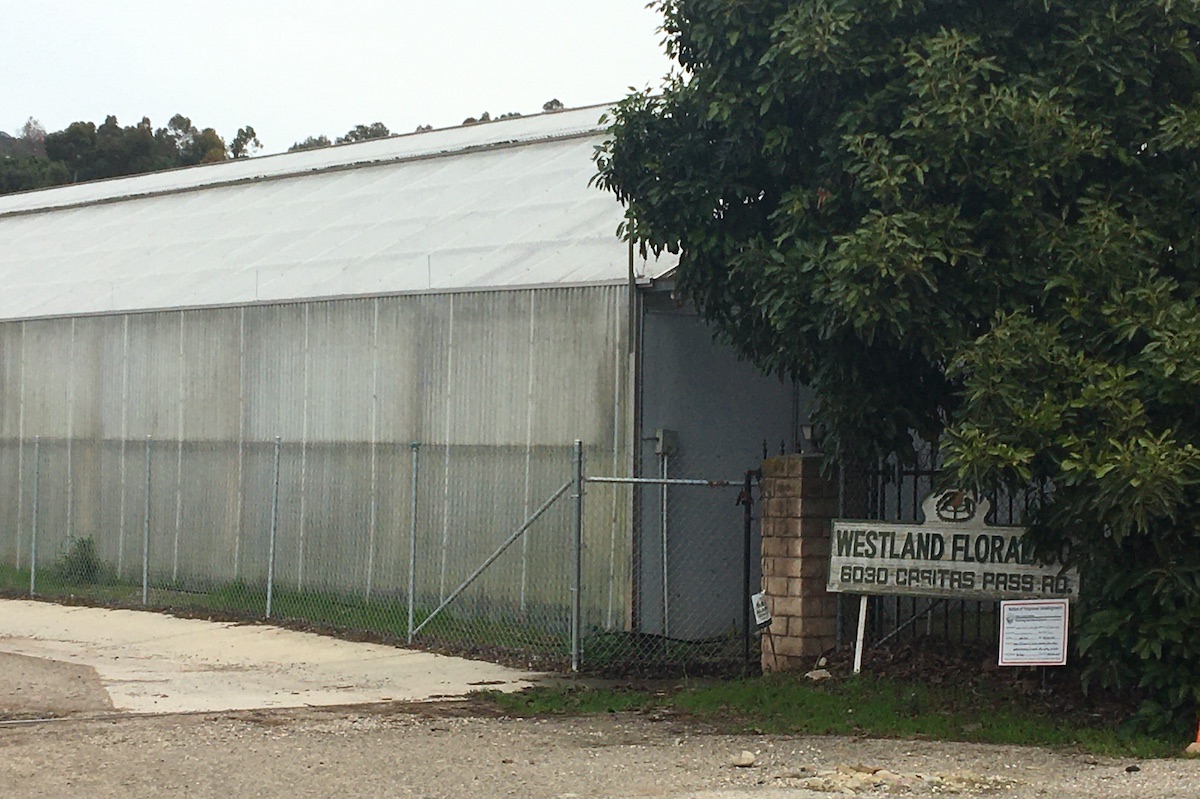
Five years after the cut-flower industry began converting to cannabis in the Carpinteria Valley, a solution to the persistent smell of pot that hangs around schools, homes, and farms appears tantalizingly within reach — if growers decide to embrace it.
A study released this month shows that state-of-the-art carbon filters, or “scrubbers,” from the Netherlands can eliminate 84 percent of the smell of cannabis, on average, before it escapes through the open vents of greenhouse roofs.
But there are no signs that a valley-wide transition to scrubbers is imminent. County officials are not eager to issue a blanket rule requiring their use across the board. And, at $22,000 per scrubber and a recommended ratio of 10 per acre, it’s expensive to adopt the new technology, especially since the price of wholesale cannabis has plummeted in recent years.
At a December 13 hearing before the county Board of Supervisors, the operators of Ceres Farms, a nine-acre grow at 6030 Casitas Pass Road and one of the largest cannabis greenhouse operations in the valley, nevertheless voluntarily proposed to install scrubbers — if they could have two years to complete the work. The board voted 5-0 to approve a zoning permit for Ceres with that timeline.
Supervisor Das Williams, who represents the valley, took credit for persuading Ceres to make the switch to scrubbers. But he said that a general mandate for their use would require an amendment to the county’s cannabis ordinance, a process that could take two years or more.
“The fastest and best remedy to this is growers voluntarily adopting carbon scrubbers,” Williams said. “There’s no way to do it faster than that.”
Weighing in at her first board meeting, Supervisor Laura Capps, who lost her bid for Williams’s seat in 2020 and was elected in November to represent the Goleta Valley, said she would favor “tightening up the ordinance.”
“It seems we owe it to our community to be employing the best technology to take care of the grievance that is plaguing the lives of people,” Capps said.
Right now, most of the cannabis industry in the valley is using an earlier technology known as a “vapor-phase” system, in which perforated pipes around the outside of the greenhouses set up a curtain of mist to mask the smell of marijuana in the open air. Since early 2018, Carpinterians have filed more than 2,800 odor complaints with the county, objecting to both the “skunky” smell of pot from the greenhouses that ring the city and the “laundromat” smell from their vapor-phase systems.
Under the current ordinance, a professional engineer or industrial hygienist can certify the “best available control technology” for a cannabis greenhouse on a case-by-case basis — and that technology can include vapor-phase systems.
Lisa Plowman, the county planning director, told the supervisors that a consulting engineering firm would soon be on board to start inspecting greenhouse odor-control systems and responding to complaints from residents. If a grower’s system is not working, Plowman said, the county can “ramp it up to the next level” and require scrubbers — without the need for an ordinance change.
Capps said: “We should not be waiting to ramp up to this best technology, but rather requiring it from the get-go.”
The Ceres Project
In September, Ceres Farms co-operators Alex Van Wingerden and Tristan Strauss, CEO of the California-based cannabis supply company Headwaters, appealed to the board to overturn a requirement for scrubbers that had been imposed by the County Planning Commission with a 12-month deadline. But Williams told his colleagues at the December 13 hearing that he had persuaded the co-operators just days before to revise his application and switch to scrubbers.
Eric Edwards, director of compliance for Headwaters, said, “We are voluntarily agreeing to phase out vapor-phase … We’re planning on transitioning the entire project to carbon scrubbers.” Edwards said Ceres needed “the flexibility” of two years to complete the work but would try to install some scrubbers — he declined to commit to a specific number — in Year One.
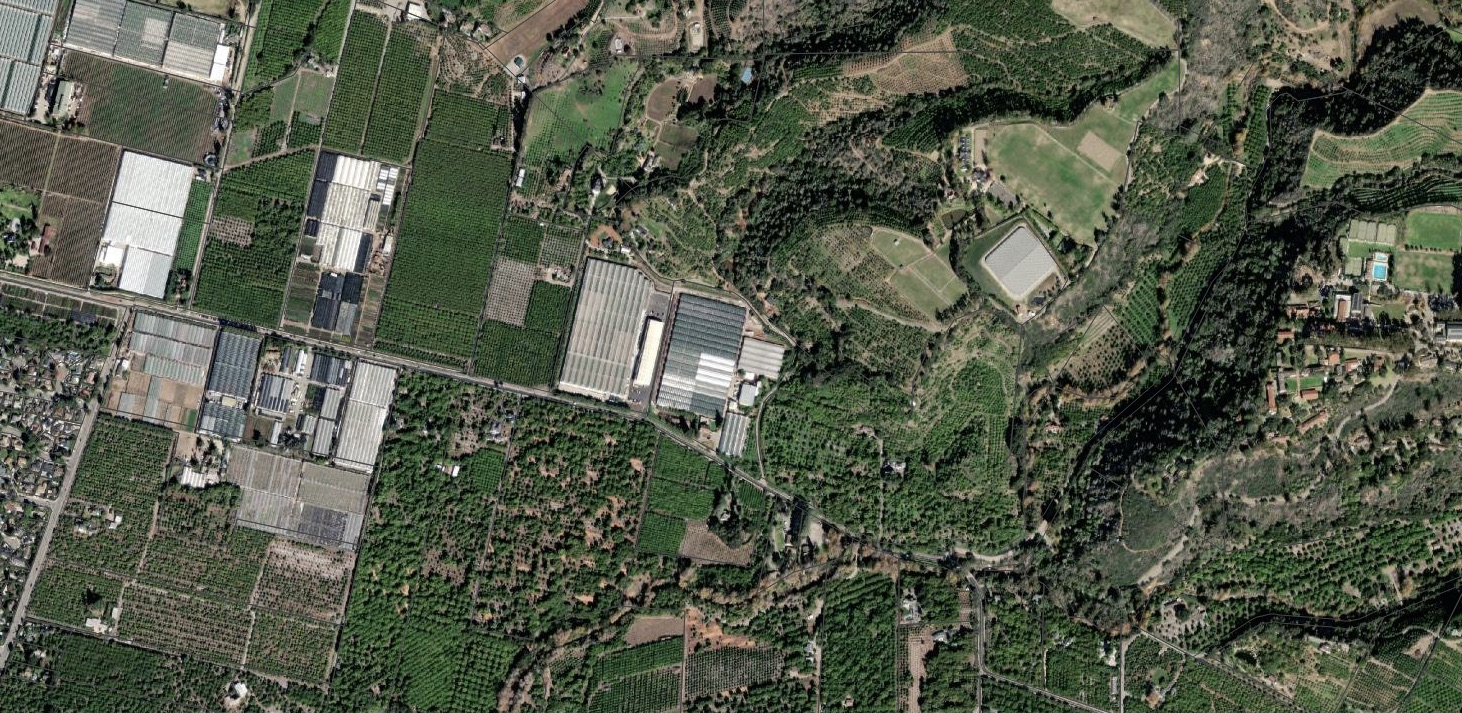
For Van Wingerden’s neighbors at the eastern end of the valley — including Bill and Danielle Dall’Armi Hahn, owners of the Rose Story Farm at 5950 Casitas Pass Road, a “fragrant rose” operation with 30,000 rose bushes for the wholesale cut-flowers market; and administrators at Cate School, an exclusive boarding school on Cate Mesa Road — it couldn’t happen soon enough.
Bill Hahn told the board that the smell of pot and the vapor-phase deodorant at Ceres was hurting the family business, driving away tenants and causing his wife to suffer headaches, nausea, and “respiratory distress.”
“We have not been able to continue selling roses, giving tours, or promoting the farm as a very special place where you can smell flowers,” Hahn said. “We can’t rent our homes. We’ve had a number of people leave the farm because they’ve said, ‘We can’t stand that smell’ … Whatever timeline is laid out, it will be slow and cumbersome.”
Supervisor Bob Nelson, whose district includes a portion of the Santa Rita Hills west of Buellton, where several vintners have objected to the smell of outdoor cannabis in their wine tasting rooms, suggested retaining the commission’s one-year deadline for scrubbers at Ceres, but allowing Plowman to extend it for another year in case of “circumstances beyond the control of the applicant.”
“I think that’s a dumb move,” Williams said. “I was hoping that we would get with this compromise a Jolly Christmas, a Happy Hanukkah ….”
“Be patient! Be patient!” Board Chair Joan Hartmann interjected.
“I was trying to be constructive,” Nelson said, noting that two years was a long time “for the people who have to live with the consequences of this.”
Sign up for Indy Today to receive fresh news from Independent.com, in your inbox, every morning.
‘Delicate Finances’
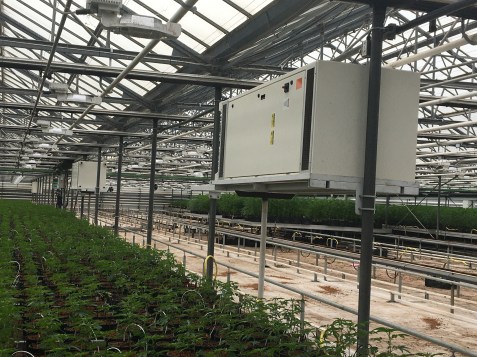
In 2021, CARP Growers, a cannabis greenhouse industry group, and the Santa Barbara Coalition for Responsible Cannabis, a citizens’ group that has filed lawsuits against cannabis growers and appealed of their projects to the county board, signed a pact to address the odor problems in the Carpinteria Valley, going beyond county ordinances. The growers pledged to resolve their odor problems by “continuously employing the best available control technology” and adopting a stringent protocol for addressing complaints. In return, the coalition agreed to stop opposing CARP Growers projects.
This month, Marc Chytilo, a coalition attorney, said he did not intend to use the pact as a “cudgel to beat growers into submission” on the question of scrubbers. The agreement, he said, “was entered into in good faith that we were all going to work together.”
“The finances are delicate enough now that these grows could go on the auction block,” Chytilo said. “We don’t want outside corporations to come in that have no connection to the community.”
At the same time, Chytilo said, “I would hope that by the end of 2023, all of the known sources of community odor will have either installed scrubbers or be on the shortlist to install them.”
So far, though, it’s been a slow pivot away from vapor-phase technology. Since late 2020, only three cannabis greenhouse operations in the valley have installed scrubbers; another five, including Ceres, have been approved with scrubbers. That leaves 27 “grows” and about 100 acres of cannabis greenhouses in the valley without them, or 60 percent of the 166 acres approved by the county or under review. (There is a 186-acre cap on cannabis cultivation in the valley.)
‘Peer Pressure’
Williams’s last-minute intervention on behalf of scrubbers at Ceres caught cannabis critics by surprise. Just two months before, on October 4, Williams had led the board in approving a permit without scrubbers for Valley Crest Farms, an eight-acre grow 5980 Casitas Pass Road, next door to Ceres. Valley Crest and Ceres are both owned by Case and Alex Van Wingerden. Valley Crest is operated by Strauss of Headwaters.
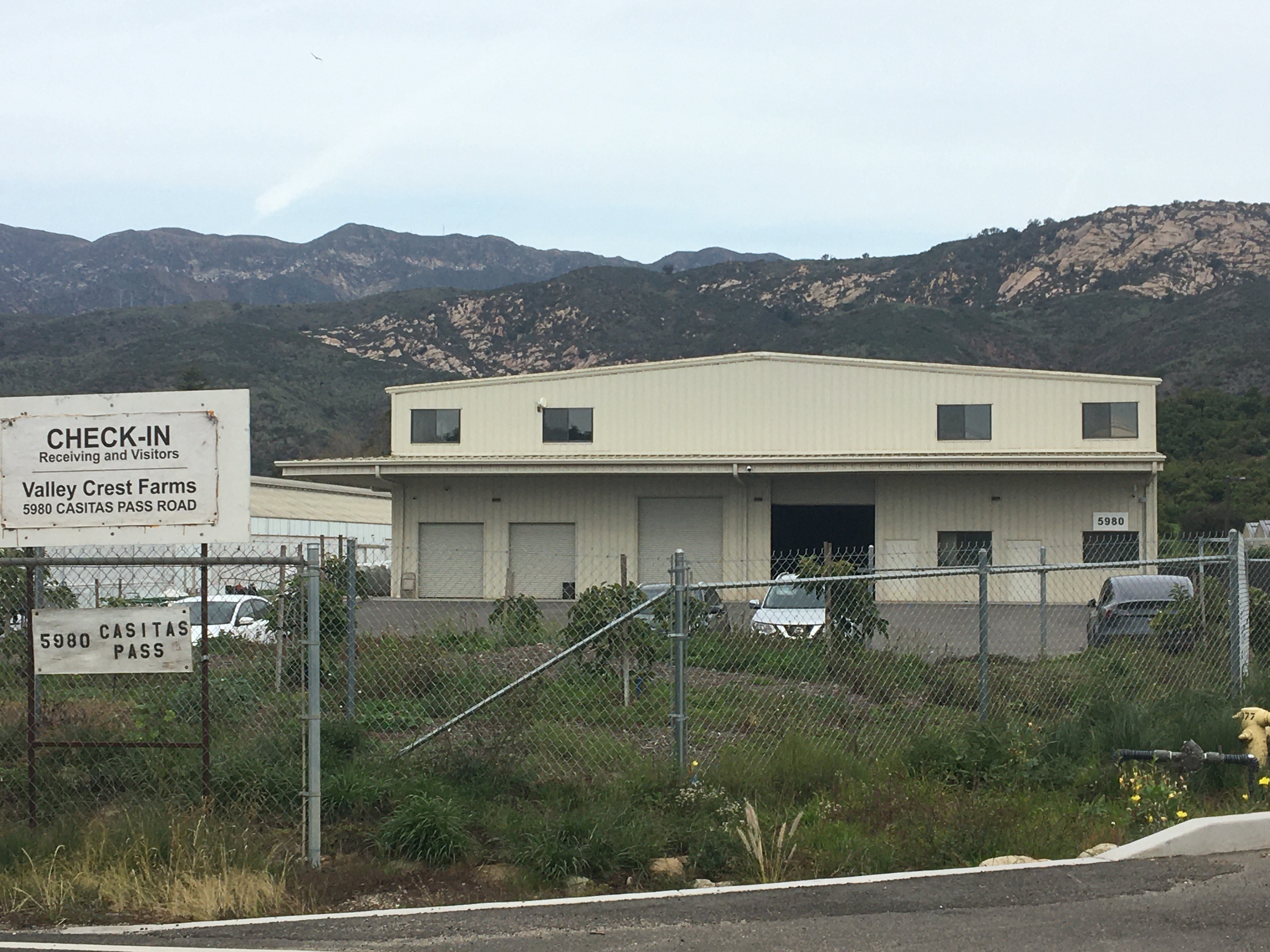
At the October 4 hearing, Williams noted that the people most affected by the smell were not living on residentially zoned land. Under the cannabis ordinance that he helped draft, growers are required to prevent odors from being experienced within residential zones but not agricultural zones. Williams also suggested that Valley Crest might need an electrical upgrade to support carbon scrubbers, and he said that the Dutch technology was “still very new.”
Then, on December 13, Williams changed course, saying, “After the last hearing, I felt like we made the right call, but I didn’t feel great about it. I felt like the issues the neighbors had were something we should address.”
Williams said he first approached Graham Farrar, the owner of Glass House Farms at 5601 Casitas Pass Road, and asked him to agree to install scrubbers. Glass House is one of the five grows nearest Cate and has been the target of hundreds of odor complaints from residents. Farrar already has a zoning permit for three acres of cannabis at Glass House greenhouses, but he promised to revise his Odor Abatement Plan and replace his vapor-phase system with scrubbers.
“Graham’s saying ‘yes’ made it easier for me to go to Ceres Farms and say, ‘I think you should do so, too,’” Williams said in an interview. “I’m not above using peer pressure.”
“I’m happy to do this if it enables us as a community to find solutions between neighbors and growers,” he added. “Carpinterians, we have our civil wars, but we prefer to work together and get along, and it’s looking like maybe a possibility.”
The problem of the smell of pot is “already solved for the 98 percent in the Carpinteria Valley,” Williams said. “Do we want to solve it for the last 2 percent? Yeah … We’re tackling the smallest pockets left.”
Anna Carrillo, a member of the coalition and Concerned Carpinterians, two citizens’ groups that have advocated for tighter regulation of the cannabis industry without much success in recent years, said she was “pleasantly surprised at how quickly Das changed … It was quite a turnaround.”
But, Carrillo said, “I definitely would not agree that 98 percent of odor issues have been taken care of. Even after so many years, there are still problem areas. People don’t like to complain, because it’s a very laborious process and they don’t see results. The growers should take care of the problem themselves.”
At Cate, a persistent hot spot for the stench of pot — along with La Mirada Drive, Cravens and Padaro lanes, Via Real, Foothill and Casitas Pass roads, and the polo grounds — the smell is a daily aggravation for 350 faculty and students, 300 of whom live on campus, Charlotte Brownlee, the assistant head of school, said on a recent weekday. Five cannabis grows, including Valley Crest and Ceres, are operating in the eastern valley nearest the school, she said; nobody knows which ones are producing the smell.
“We’ve been living with the odor for five years,” Brownlee said. “It was bad today. It was bad yesterday. Whenever we have the cloud cover, it seems to sit over us.
“Obviously, we’re happy in the long run that we are moving toward carbon scrubbers becoming the accepted best available technology. But we are frustrated with the two-year window for Ceres because we would hope the county and the growers would work together to get these in as quickly as possible.”
Melinda Burns is an investigative journalist with 40 years of experience covering immigration, water, science, and the environment. As a community service, she offers her report to multiple publications in Santa Barbara County, at the same time, for free.
Support the Santa Barbara Independent through a long-term or a single contribution.


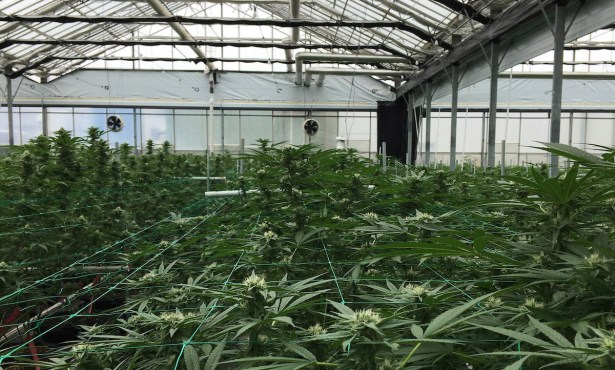
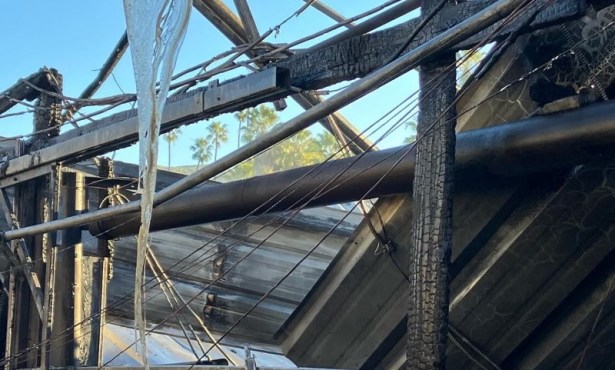
You must be logged in to post a comment.